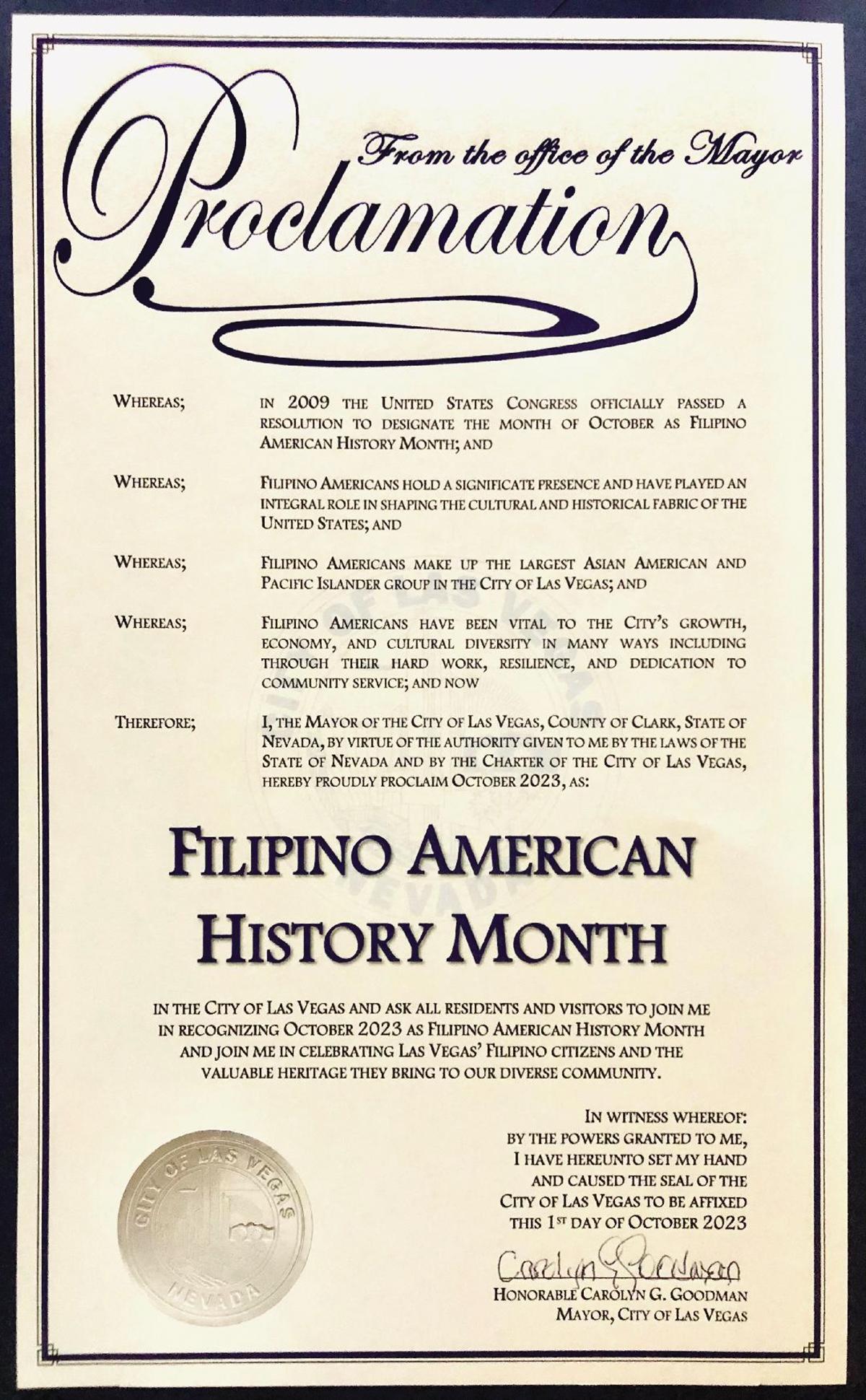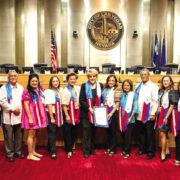
LAS Vegas Mayor Carolyn Goodman issued a proclamation dedicating October as Filipino American History Month in the city, which is home to a sizable Fil-Am population.
At City Hall on Tuesday, October 10, Goodman read the proclamation, dated Oct. 1, during a ceremony attended by prominent Fil-Am community leaders who have contributed to the fabric of Las Vegas, including members of the Nevada chapter of the National Federation of Filipino American Associations (NaFFAA).
In the proclamation, Goodman asks “all residents and visitors to join me in recognizing October 2023 as Filipino American History Month and join me in celebrating Las Vegas’ Filipino citizens and the valuable heritage they bring to our diverse community.”
Community leaders in attendance on Tuesday included: Gloria Caoile, Sally Balecha, Geraldine Inciso, Rozita Lee, Bernie Benito, Anna O Ladao, Arthur de Joya, Asela Engel, Johann Sayson, Dorothy Domingo, Carl Magno, Honorary Consul Amie Belmonte, Leo Belmonte, Elizabeth Gamboa, Lloyd Gamboa, Minddie Lloyd, Walbert Castillo and Sol Llasos.
The first recorded presence of Filipinos in the continental United States, which occurred on October 18, 1587, when “Luzones Indios” came ashore from the Spanish galleon Nuestra Senora de Esperanza and landed at what is now Morro Bay, California, according to the Filipino American National Historical Society (FANHS).
October 1992 was the first time a month dedicated to Filipino Americans was celebrated in the United States, a year after FANHS passed a proclamation.

In 2009, U.S. Congress declared October as Filipino American History Month, and in 2015, then-President Barack Obama celebrated the first FAHM at the White House.
For 2023, FANHS shared this year’s theme as “1898: Recognizing 125 years of Philippine-American History,” marking the anniversary of the signing of the Treaty of Paris agreement between Spain and the United States that ended the Spanish American War and led to the U.S. annexation of the Philippines.
“As a result of the Treaty of Paris, Filipino people gained access to the U.S. during an era when other Asian countries were prohibited from doing so,” FANHS wrote.
Through the treaty, Filipino migrants were considered U.S. nationals until 1965 and could migrate to the U.S. and its territories without restrictions. With this, many Filipinos contributed to the agricultural labor force in Hawaii and the west coast of the U.S.
The Pensionado Act of 1903 paved the way for Filipino students to attend U.S. universities until 1943, while American curricula and educational systems were introduced to the Philippines, FAHNS shared. This resulted in English proficiency and the recruitment of Filipino nurses, teachers and other professionals to the U.S.
“The year 1898 also marks an important year in Philippine history. After centuries of Filipinos fighting against Spanish colonizers – with the most successful uprising being the Philippine Revolution (1896-1898) – the people of the Philippines declared their independence on June 12, 1898,” according to FAHNS.
Throughout October, areas across the U.S. proclaim their own recognitions of the month, host celebrations and festivals, and other activities to highlight the community’s contributions to the country’s history.
Several events and exhibitions honoring the Filipino American community will be held throughout the city of Las Vegas during this month. n






